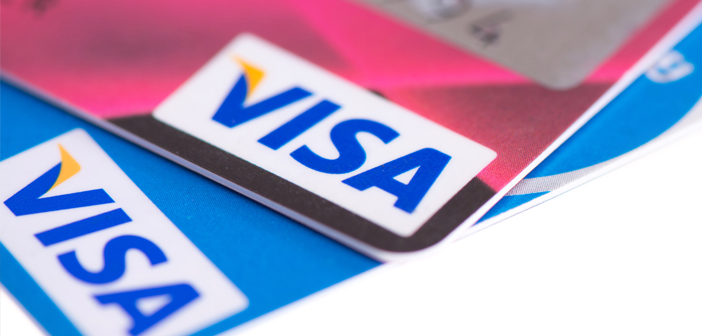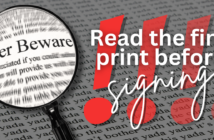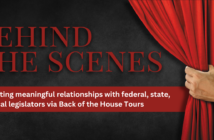Credit card fraud and revenue loss from chargebacks are on the rise, but there are ways for hoteliers to protect their business.
By Alicia Hoisington
Chargebacks occur when customers dispute a transaction on a credit card, stating they have not received a product or service as promised. In some cases, the request is legitimate. In many cases, chargebacks are a result of friendly fraud, or when customers make a purchase and request that the funds be credited back to their card after receiving the product or service. In fact, recent research from LexisNexis found that 60 to 80 percent of chargebacks occur due to friendly fraud.
But for any reason, chargebacks – which usually tend to favor customers – are costly to the hotel industry. For instance, for every dollar of losses, merchants are losing $2.40 based on chargebacks, fees and merchandise replacement, according to LexisNexis research. And due to the nature of the industry, with guests constantly changing travel plans, chargebacks are a big problem hotel owners and operators face.
“Chargebacks are a costly, inconvenient and time-consuming headache for AAHOA members and the rest of the hotel industry. While consumers may rightly recover any funds lost as a result of unauthorized financial activity, hoteliers can never recover the cost of labor and materials associated with a guest’s stay or the processing fees that issuing banks inevitably charge,” says Chip Rogers, president and CEO of AAHOA.
“Moreover, in many cases, hoteliers have no financial recourse when it comes to no-show fees and in-room smoking charges. Guests incur the charge, dispute it and ‘win,’ leaving the hotelier holding the bag,” he adds. “It is particularly frustrating that other components of the travel industry, such as airlines, can charge similar fees without encountering the same issues.”
However, experts say there are ways to avoid chargebacks and steps hoteliers can take if a customer opens a dispute.
How to avoid chargebacks
Ben Dwyer, founder of credit card processing consultant CardFellow, says a good defense is the best offense.
“The worst time to develop a plan is when you get a chargeback,” he says. “Chargebacks can catch owners by surprise very often, but then they have a minimal amount of time to respond, so there’s no time to learn what it is or how to respond.”
Dwyer says hoteliers need to develop their plans before chargebacks even become an issue so that they know the steps to take when the problem inevitable arises. Because although the chargeback process can sometimes be lengthy, the shortest part of it is the time in which the business has to respond to the request.
Faheem Khan, executive director, hospitality and real estate for Chase Merchant Services, says the best way to prevent chargebacks is to establish best practices during the sale that all employees consistently follow.
Sources say that the best practices for chargeback avoidance include:
Clearly display terms and conditions. While it’s important that terms and conditions are shown to guests, it’s equally important that hoteliers document proof that customers read and understood the terms.
Khan says that hoteliers should share a copy with customers at check-in and ask that the terms be initialed by guests to keep on file.
For online booking systems, Dwyer says customers should not be allowed to proceed to complete checkout unless they click a box confirming they have read and understood the policies.
“Then if someone does issue a chargeback, you can offer proof that they said they read the policies,” he says.
Documentation is key. Khan says that hoteliers should be sure to keep documentation, authorizations and comments on amended or delayed charges in case any issues arise.
Additionally, Dwyer says that documentation of policies should be printed everywhere possible, including on sales receipts given to customers. Contact information also should be printed and displayed wherever possible in case a customer has an issue.
“Don’t make them go searching for your number, make yourself available,” he says.
Secure POS practices. EMV-compliant point-of-sale systems are key, Khan says. Liability for fraudulent purchases at POS systems shifted to merchants in October 2015 unless they upgraded their credit card processing systems with chip and pin devices.
But Dwyer says that hoteliers need proof on their side should a chargeback request happen. They need to prove the customer and his or her credit card was physically at the POS. There are two ways to provide proof:
- Electronic data capture, or swiping the card through the POS.
- Manual imprint if the card won’t swipe. It might seem archaic, but it’s the only other way to prove the card was physically at the POS.
“You won’t win [a dispute]without proof,” Dwyer says. “You need to prove that card was there.”
Be truthful with advertising. Many chargeback requests happen when a customer feels a product or service was not as described. Thus, Dwyer says that how you represent your hotel needs to match its reality.
“You don’t want to show pictures on your website of your hotel decked out to the nines, and it’s really dated with décor from the 70s,” he says.
Sometimes customers will dispute transactions for smaller things if they believe a service wasn’t as described, Dwyer adds. For example, if someone books nine rooms for a wedding under the impression that a certain amount of room service comes with the bookings and then that’s not the case, the guest can request a chargeback and win if it’s determined the service received wasn’t as described.
What to do if a chargeback is requested
Despite best efforts, chargeback requests will inevitably happen, but that doesn’t necessarily mean all hope is lost.
“When it happens, there are different levels,” Dwyer says. “An instance doesn’t always jump straight to chargeback.”
He says the No. 1 mistake he sees business owners make when chargeback requests happen is that they refund the customer’s money.
“Don’t refund anything,” Dwyer says. “The inquirer is going to take the money automatically. Some people are good natured and they go in and refund, but they would pay twice if they do.”
When a customer does initiate a chargeback, Dwyer and Khan both say it’s important to respond quickly and provide as much documentation as possible to legitimize the transaction. The timeframe businesses have to respond should be clearly laid out in the request – and it’s usually not much time. If the request is ignored, the chargeback will go through.
Beyond responding to the request, Dwyer says it’s important to not assume your information made it to the inquirer; delivery confirmation is a must.
“If you’re sending via mail, get delivery confirmation,” he says. “If you are sending electronically, make sure you get confirmation of receipt. These companies process tons of paperwork… so you need to cover your tracks.”
Dwyer says the rule of thumb for owners is to assume they are guilty because that is what the issuer will assume. That’s why it’s important to send anything and everything to bolster the case for innocence.
However, sometimes a legitimate transaction is charged back.
“If a customer disputes a legitimate charge, try to get more information on why the claim was submitted so you can address any satisfaction issues,” Khan says. “Business owners also can contact the customer for another form of payment. If an issue is not resolved, you can explore other options with advice from a lawyer.”
Arbitration is another option, but there is a fee, which Dwyer says isn’t often advertised. Sometimes that fee is more expensive than the original charge, which causes many businesses to simply eat the loss.
Customers have 120 days from the date of transaction to request a chargeback, Khan says. The entire investigation cycle can take 150 days or more to complete if the case goes to arbitration.
“The payment brands are working to condense this timeframe in the next year,” he says. “Today, you are credited for the transaction if we are able to represent the transaction and not debited again unless you lose the chargeback until the end of the chargeback cycle.” ■
The rising cost of chargebacks
Credit card fraud continues to be an issue for businesses everywhere. Each year, the cost of fraud as a percentage of revenue continues to increase. In 2016, this cost rose to 1.47 percent, up from 2013’s 0.51 percent, according to recent research from LexisNexis. Chargebacks in particular pose a costly problem.
In 2016, the average number of monthly fraud attempts increased 33 percent year over year. Of those, 46 percent succeeded in bypassing business owners’ fraud mitigation efforts.
Online merchants reported that 49 percent of revenue loss from fraud is a direct result of chargebacks.
U.S. merchants reported an 8 percent increase in cost per dollar of fraud losses in 2016. For every dollar of losses, merchants are losing $2.40 based on chargebacks, fees and merchandise replacement.
Chargebacks are caused by:
- 1–10 percent to criminal fraud;
- 20–40 percent to merchant error; and
- 60–80 percent to friendly fraud.
Source: 2016 LexisNexis True Cost of Fraud Study.




